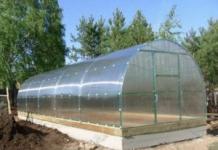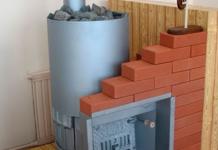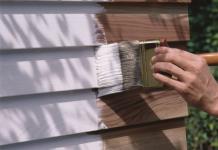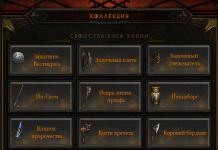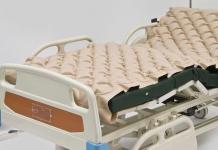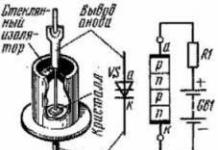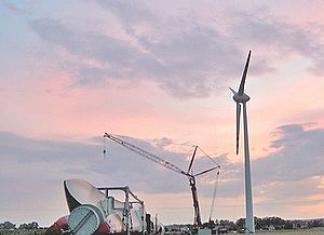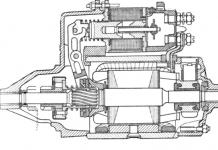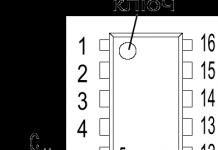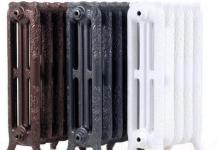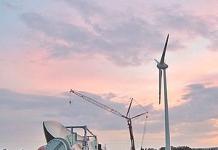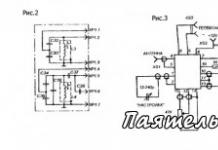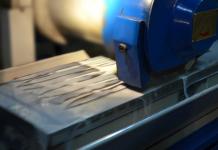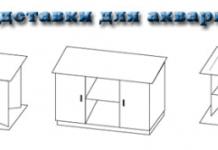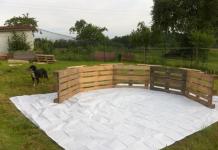Heating radiators are usually used as heating devices in apartments and private houses, and the first question that arises when installing heating systems is which batteries are better to install in an apartment? The answer to this question depends on many factors, and in order to thoroughly understand it, it is necessary to consider the features of the device and the operating conditions of all types of radiators currently on the market.
To date, there are four most popular types of radiators:
- cast iron;
- aluminum;
- steel;
- Bimetallic.
Based on the difference in shape and material, each type of radiator has its own characteristics, and it is they that determine their use.
Cast iron radiators
The familiar bulky cast-iron batteries, painted with paint, are a thing of the past. To replace them, modern varieties of cast iron radiators appear in stores, which have not only an attractive appearance, but also reliability, proven for decades.

Features of cast iron radiators:
- Working pressure from 6 to 10 atm., test - up to 18 atm.;
- Can work in systems with any pipes;
- Can be used for a long time in central heating systems with a pH value of 7-9;
- The partitioned structure allows you to select the required number of sections, and in the case of reconstruction, add or remove them.
Cast iron radiators have a number of advantages. They are little susceptible to corrosion - as a result of the primary interaction with water, a black insoluble precipitate forms on their inner surface, which prevents the penetration of oxygen dissolved in water to the metal. The destruction of cast-iron pipes from the inside, with proper operation, is extremely slow. Outside, the radiators are covered with resistant paint and are reliably protected from destruction. Cast iron radiators have extremely low gas formation, they do not boil, do not require constant air bleeding.
One of the main disadvantages of cast iron batteries is their heavy weight, which makes them difficult to install. The disadvantages of cast-iron radiators can also be attributed to inertia - cast iron heats up slowly and cools slowly, so it is impossible to quickly control the air temperature in a room with cast-iron radiators.
Steel radiators
Steel radiators have the form of a ribbed plate, inside of which there is a hermetically welded circuit filled with a coolant. The large area of the radiators and the ribbed surface shape provide good heat dissipation and convection conditions for warm air. The material - steel, has almost the same thermal conductivity as cast iron, but the wall thickness of steel batteries is less, so they warm up faster. Steel radiators are designed for operating pressures from 6 to 10 atm.

Advantages of steel radiators:
- The shape and appearance allow you to successfully fit steel radiators into any modern interior;
- Steel radiators, like cast iron ones, with proper water treatment in central heating systems serve 15-25 years;
- Can be used in systems with any pipes. Both in one-pipe and in two-pipe;
- They are low cost and easy to install.
Before installing steel radiators, it is necessary to produce - a closed circuit does not allow to build them up and change the thermal characteristics.
Under pressurized conditions, steel panel radiators may lose their tightness. Therefore, you should not use them in houses with more than 5 floors - the system in them is designed for a pressure of more than 6-8 atmospheres.
Aluminum radiators
Aluminum radiators have a neat, compact and modern appearance, they are also sold in the form of stacked sections, so you can choose the optimal number of them, determined by calculation. The height of aluminum radiators is also different, so they can be placed in convenient places in the room. The working pressure of aluminum radiators is from 6 to 12 atm., Test - up to 25 atm.

The advantages of aluminum radiators are obvious:
- Have a modern look
- Heat dissipation is high compared to other radiators and can reach 200W per section;
- Aluminum radiators are much lighter than other types of batteries, due to this they are easy to mount;
- You can choose the required number of sections;
- On the outside, they are protected by a polymer coating that protects the radiators from damage.
The main disadvantage of aluminum radiators is that they can only be used for a long time in closed systems with strict pH control of the coolant. Do not use pipes and fittings made of other metals. Aluminum is an extremely active metal, and when interacting with copper and brass forms a galvanic couple, which can cause electrochemical corrosion and the appearance of surface currents. Therefore, to implement coolant supply systems for aluminum radiators, it is better to use plastic pipes, and ground the radiators themselves.
In addition, when in contact with fresh, oxygenated water, aluminum reacts, the product of which is hydrogen gas. Gas bubbles entering the system cause unpleasant sounds. Because of this feature, when installing aluminum radiators, it is imperative to provide a gas exhaust system and install a Mayevsky crane.
Based on these features, we can conclude that aluminum radiators, despite their low price and excellent heat dissipation, should not be installed in city apartments with centralized heating. If it is impossible to control the quality of the coolant, one cannot be sure of their long service life.
Bimetal radiators
As the name implies, these radiators are made of two metals - steel and aluminum, while using the advantages of both of these metals. The internal circuit that conducts the coolant in bimetallic radiators is made of steel, which allows them to be used in systems with any pressure and with various types of pipes and fittings. The outer plates, which transfer heat into the space of the room, are made of aluminum and, due to its high thermal conductivity, perfectly heat the room.

Advantages of bimetallic radiators:
- High working pressure - up to 35 atm.;
- Resistance to corrosion at any quality of the coolant;
- Low inertia - radiators quickly heat up, cool down just as quickly, and by controlling the supply of coolant, you can quickly reduce or increase the temperature in the room;
- Attractive appearance;
- Light weight, easy installation;
- Sectioned design, allowing you to select the desired number of ribs.
The disadvantages include, perhaps, the higher price of bimetallic radiators. What is soon compensated by their reliability and long service life. It should also be noted that when installing bimetallic radiators, it is imperative to observe the distances to the wall, floor and window sill - it must be at least 4 cm.
Summing up, we can say: for installation in an apartment with central heating, it is better to choose cast-iron or bimetallic radiators, and for low-rise buildings - also steel. Aluminum radiators are best used in closed systems connected to a heating boiler, that is, where it is possible to check the quality of the coolant.
Buying a heating radiator (RO) is not a trivial task. There are many models, they cost differently, and it is not always clear which of the items on the store shelves meets our requirements. Therefore, we will save your time and tell you what to be guided by when choosing. We bring to your attention rating of the 20 best heating radiators for an apartment and a private house. Choose any of them - you won't go wrong!
For a private house or apartment?
There are dozens and hundreds of companies specializing in the production of RO. The competition is insane. Marketers come up with new arguments in favor of their products. This makes the choice in terms of characteristics richer, and making a purchase by an ordinary buyer is more difficult. Let's start with the simplest.
If you need a device for a private house or apartment with an individual heating system, then choose according to power and design. Those. they saw a model that they liked externally, picked it up according to its power / size - and that’s it. For an apartment in a multi-storey building, where the coolant is supplied through the pipes of the centralized heating system, the operating pressure set by the manufacturer must also be taken into account. It should not be below 10-12 atmospheres. Otherwise, the structure will tear when water is supplied.
And now let's deal with the types of heating radiators, traditionally presenting the data in the form of a "tiny" table.
| Comparison criterion | Varieties | Characteristics |
|---|---|---|
| Execution | Sectional |
|
| Tubular |
|
|
| Panel |
|
|
| Radiator material | Cast iron |
|
| Steel |
|
|
| Aluminum |
|
|
| Bimetal (steel+aluminum) |
|
|
| Copper |
|
|
| Gasket material | Silicone | Withstands high temperatures, effectively compensating for the expansion of metal structures. Ideal for low pressure heating systems, such as in private homes. |
| Paronite | Paronite is a pressed rubber with an admixture of asbestos and other components. Durable, withstands high temperatures. It is used most often in centralized heating systems. | |
| Fluoroplast | Product made of heat-resistant polymer, installed without lubrication. Withstands all types of coolants. | |
| Cardboard | Impregnated with oil paint, a special cardboard successfully copes with its function in aluminum and bimetallic RO installed in private homes. | |
| coolant | Water | This is not about plain water, but about specially prepared water. It is this that circulates in the centralized heating system. It limits the content of hardness salts (due to which salt deposits are formed in the pipes - scale) and oxygen (due to which the material corrodes and collapses). The requirements for water in the EU and the Russian Federation are different, therefore, when buying a foreign-made heating radiator, it is recommended to take into account the chemical composition of the water in your heating system. If you wish, you can find it in the ZhES. |
| Antifreeze | Antifreezes or "anti-freeze" are used for systems with an individual heating circuit. They are needed in case of risk of freezing of the coolant due to the switched off boiler. As you know, the coolant is always in the system. If, for example, the water in the system freezes in winter, then due to expansion, it will break pipes, a radiator, etc. Antifreezes do not freeze at average sub-zero temperatures. Ethylene glycol, propylene glycol, alcohol solutions can act as such heat carriers. | |
| Installation location | Stationary | Traditional heating radiators installed in most apartments. Fastening to the wall is carried out using special pin or corner brackets |
| floor standing | The same as stationary devices, only installed on special legs. | |
| Operating pressure* | up to 10 atm. | Such values are mainly typical for panel-type devices. |
| up to 20 atm. and higher | For tubular and sectional RO. | |
| center distance | 350, 400, 500, 600, 700mm | The distance between the axes of horizontal collectors, along which a device is selected for connection to an existing pipe layout. |
| Connection method | Lateral unilateral. (subtype of lateral connection) | The most common and effective solution in terms of using the capabilities of the RO. Connection from the side: from above - to the pipe supplying the coolant, from below - to the outlet. |
| Diagonal (subtype of lateral connection) | Most often used when connecting long devices (from 2 m and above), which allows you to evenly distribute the coolant throughout the entire volume of the structure. Inlet from above, outlet - from the lower opposite side. | |
| Saddle (subtype of lateral connection) | For sectional RO when it is impossible to use other methods. Inlet and outlet from the bottom side on opposite sides of the device. The power of the heat exchanger in this case may drop by 10-20%. | |
| lower | For connecting panel switchgear with pipes hidden under the floor. Inlet and outlet from below at a short distance. The efficiency of the radiator is lower than with side and diagonal connections. | |
| Thermal power** | values in a wide range | Characterizes the ability of the radiator to transfer a certain amount of heat from the coolant to the room per hour of operation. It depends not only on the size and design of the RO, but also on the temperature of the coolant, as well as the air in the room. |
| Dimensions | Average: height 260 to 800 mm, width 270 to 1800 mm, depth 50 to 100 mm | Directly affect the thermal power of the device, because. the volume of coolant circulating in the device depends on this. |
* Before choosing a device, it is necessary to clarify the maximum pressure in the heating system in the housing and electrical power station. Remember that all radiators are suitable for a centralized heating system, except for aluminum ones!
** We are often asked how to choose the right heating radiator in terms of power. To make life easier for you and ourselves, we have developed a handy calculator. Use on health!
For those who want to independently estimate the thermal power, you can use the following technique. We determine the required values per unit area of \u200b\u200bthe room: 100 W / m 2 - one window and one external wall; 120 W / m 2 - one window and two external walls (corner room); 130 W / m 2 - two windows and two external walls (corner room). For example, there is a corner room of 20 m2 with two windows. Then the approximate power of the RO will be: 20 × 130 = 2600 W. Let's make an allowance for the fact that the passport characteristics of the radiators are tied to the ideal operating conditions of the device - 10% is quite enough. In total, we obtain the required thermal power: 2600 × 1.1 = 2860 W.
It remains only to decide on the desired model, which you can find among the 20 devices selected by us.
| Brand and country of production | Section/panel model and dimensions (W×H×D) | Material, nominal heat flux per section/panel, W | Approximate price per unit/section |
|---|---|---|---|
| 1. | STYLE PLUS 500 (80×575×95) | bimetal, 185 | from 1041 rub. |
| 2. | ALP-500 (81×570×75mm) | bimetal, 158 | from 630 rubles |
| 3. | RS 500 (80×572×95) | bimetal, 201 | from 850 rub. |
| 4. | Monolit 500 (80×577×100) | bimetal, 196 | from 850 rub. |
| 5. | Piano Forte 500 (80×591×100) | bimetal, 185 | from 1500 rub. |
| 6. | ISEO 500 (80×582×80) | aluminium, 180 | from 790 rub. |
| 7. | Standard Plus 500 (79×531×72) | aluminium, 198 | from 400 rubles |
| 8. | Al 500/80 (79×531×72) | aluminium, 170 | from 420 rub. |
| 9. | ALICE ROYAL 95/500 (80×580×95) | aluminium, 190 | from 560 rubles |
| 10. | Indigo 500 (80×591×100) | aluminium, 185 | from 630 rubles |
| 11. | Logatrend K-Profil 33 300 1200 (1200×300×155) | steel, 670 | from 2000 rub. |
| 12. | Harmony 2-500-12 (70×545×80) | steel, 180 | from 2250 rub. |
| 13. | type 22 500×1000 LU 22-510 (1000×500×47) | steel, 697 | from 2850 rub. |
| 14. | FKO 22 0510 (1000×500×100) | steel, 965 | from 2650 rub. |
| 15. | Style (60×580×130) | cast iron, 70 | from 1500 rub. |
| 16. | MS-140M-05 (104×588×140) | cast iron, 160 | from 500 rub. |
| 17. | Modern 3-745/600 (45×745×100) | cast iron, 102 | from 2000 rub. |
| 18. | Aero H (325×900) | steel, 290 | from 41000 rub. |
| 19. | Karotherm KM90 (500×943×22) | steel, 481 | from 100000 rub. |
| 20. | Apollo 765/05 (76×768×250) | cast iron, 145 | from 6600 rub. |
In addition to the heat exchanger itself, do not forget about the control valves (thermal head) and the Mayevsky crane (if not included), which must be purchased separately. The same applies in some cases to mounting kits. For single-pipe heating systems, a bypass will be required.
We offer you a small rating, which contains the best models of heating radiators. To make it convenient to compare, we tried to select devices with the same number of sections - most often there will be 6 of them. Such a border solution is the most demanded for standard apartments. All prices are for comparison purposes only.
5 bimetal radiators
1. Global STYLE PLUS 500, 6 sections - from 4600 rubles.

STYLE PLUS 500 model of the famous Italian manufacturer Global. A feature of STYLE PLUS 500 is an increased margin of safety - the product is able to withstand pressure up to 35 atmospheres - as well as an increased diameter of the vertical channels connecting the horizontal collectors. To seal the joints of the sections, special silicone gaskets are used, designed for contact only with treated water - other types of heat carriers are not allowed. This bimetallic product is designed in such a way that air pockets do not form inside, preventing the correct operation of the device. Warranty - 10 years.
2. RIFAR ALP-500, bimetal, 6 sections - from 3800 rubles.

In 2002, the Russian company Rifar quickly broke into the production of heating radiators for private houses and apartments, and has since achieved considerable success. The main specialization of RIFAR is the development and production of bimetallic and aluminum devices. In the RIFAR ALP-500 bimetallic radiator model, high heat transfer is achieved due to the developed side surface of the section. Therefore, the design turned out to be very slender - only 75 mm thick! On sale there are models with the number of sections from 4 to 14, connected through silicone gaskets, which provide uncompromising tightness. RO can be made in any of the colors of the RAL 9016 palette. However, it should be borne in mind that only specially prepared water should be the coolant for such a device - “antifreeze” used in heating systems of private houses will not work here. 10 year warranty.
Check out a ten-minute video about the manufacture of the Rifar radiator:
3. SIRA RS 500, bimetal, 6 sections - from 5100 rubles.

Under the Sira brand, high-quality Italian ROs are produced, including the model we are interested in - RS 500. Reliable, stylish and efficient - this is how this product can be characterized. The company is more than half a century old, so only proven solutions are used: a solid steel contour with an outer layer of aluminum, high-quality painting. It differs from other solutions in the absence of sharp corners. The warranty is 20 years. However, keep in mind that the mounting kit is non-standard, not available everywhere, so it’s better to buy it first.
4. Rifar Monolit 500, bimetal, 6 sections - from 5600 rubles.

It is not by chance that the Monolit 500 model from the previously mentioned manufacturer Rifar appeared in our rating. Everything is due to the fact that the Russian company has really succeeded in developing innovative solutions for heating. The product fully justifies its name - it is monolithic, the sections are conditional here, because they are welded together, forming an integral structure. Thus, the possibility of coolant leakage is reduced to zero. This RO can withstand pressure up to 100 atmospheres! Plus, there are practically no restrictions on the coolant used. The manufacturer's warranty is 25 years.
5. Royal Thermo PianoForte 500, bimetal, 6 sections - from 9000 rubles.

Do you want a bimetallic radiator to be not only reliable, but also look sophisticated? Evaluate the possibilities, which looks like a piano keyboard. In addition to the fact that the product from Italians has an original appearance, many technologies were used for its production: additional fins on vertical channels (POWERSHIFT), asymmetric arrangement of sections (3D HEATING), the ability to use any coolant, including antifreeze (ABSOLUTBIMETALL), seven-stage painting etc. The device is available in three colors. Warranty - 25 years.
Watch the video about the main advantages of "Royal Thermo":
5 aluminum radiators
6. Global ISEO 500, aluminum, 6 sections - from 3200 rubles.

– compact sectional die-cast aluminum radiator. It can operate on specially treated water or at temperatures up to 110×C and pressures up to 6 atm. - for a couple. On sale there are 8 modifications that differ in color, the number of sections can reach 14 pcs. The manufacturer positions it as a model designed for operation in the Russian Federation. This is due to the design feature: a developed area and a large volume of coolant circulating in the device. Due to this, it works effectively even with low temperature water. Warranty - 10 years.
7. Thermal Standard Plus 500, aluminum, 6 sections - from 2400 rubles.

This and other RO models have been produced in the Russian Federation for almost 20 years at Zlatmash OJSC, which is a defense enterprise. It specializes in aluminum appliances, instead of casting technology, pressing from hardened profiles is used. The main advantage lies in the price and high rated heat output. The volume of the section is small, which allows you to quickly adjust the temperature of the product. A working pressure of 24 atmospheres is more than enough for normal operation in any apartment buildings. The number of sections in a standard delivery varies from 3 to 16. With a declared service life of 25 years, the manufacturer's warranty is 5 years. Only specially prepared water can be used as a heat carrier.
8. Oasis Al 500/80, aluminum, 6 sections - from 2500 rubles.

The Oasis brand belongs to the Forte Prom GmbH holding, and despite the English name, we are again dealing with Russian products. The aluminum radiator Al 500/80 is produced by injection molding: each section is cast and then the bottom is welded to it. Classic design with a developed side surface, a significant volume of coolant in the system, as well as a 15-year warranty - this is how this device can be characterized. Models are supplied in 4, 6, 8, 10 and 12 sections.
9. Sira ALICE ROYAL 95/500, aluminum, 6 sections - from 3300 rubles.

Flowing lines give the ALICE ROYAL 95/500, produced under the Sira brand, a versatile look. Therefore, the device will look good in any room. The product is made using injection molding technology, it is reliable and durable. A limit of 16 atmospheres for working pressure is enough for installation in most high-rise buildings. Warranty - 15 years.
10. Royal Thermo Indigo 500, aluminum, 6 sections - from 3800 rubles.

Despite the Italian roots, it is produced in the Russian Federation. In addition to the original design, this device uses an interesting reverse convection technology, thanks to which cold air is cut off from the windows. This became possible due to the design of the upper part of the RO, with the help of which a reverse flow of warm air is formed. Additional fins on the vertical channels increase the heat output by 5%. The ultra-resistant layer of paint ensures the preservation of the original appearance of the product throughout the entire service life. Warranty - 10 years.
Watch the Royal Thermo innovation video:
5 steel radiators
11. Buderus Logatrend K-Profil 33 300 1200, steel - from 6000 rubles.

Under the famous German brand Buderus, a wide range of heating equipment is produced, so we simply could not help but add the successful model of the Logatrend K-Profil 33 300 1200 steel radiator to our rating. It is a steel panel unit with three panels and fins and side connection. It is distinguished by the presence of safety edges - a huge plus for families with children. Among the features include the presence of a built-in Danfoss thermostatic valve, which increases the efficiency of the device by 5%. In addition, the RO itself can be installed on either side - it does not have a designated rear. There are many modifications in the series with 1, 2 and 3 panels, with and without convection plates. Warranty - 5 years.
12. KZTO Harmony 2-500-12, steel - from 27,000 rubles.

Another interesting steel model is presented by the Russian enterprise KZTO RADIATOR, which has been operating since 1997. We are talking about the Harmony line of sectional devices, in which the section is made in the form of a double-walled pipe - a coolant circulates inside. This design provides efficient heat transfer, looks stylish, and is easy to maintain. By default, it is supplied for wall mounting. The service life is 25 years, the warranty is 5 years.
Watch a video about installing a KZTO Harmony radiator:
13. Lideya type 22 500 × 1000 LU 22-510, steel - from 5700 rubles.

Products of Belarusian manufacturers are represented on the Russian market quite widely. Radiators are no exception, competitive due to affordable prices and good quality. Model Lidea type 22 500 × 1000 LU 22-510 from the Lidselmash plant is made of cold-rolled steel, the panel thickness is 1.2 mm. Already by the designation it is clear that the design of this device is as follows: 2 panels, 2 convectors. The mount is universal (supplied in the kit), in addition to branch pipes for side connection, there is also a pair for the bottom one. This RO can be installed in any heating systems, including gravity ones. Warranty - 5 years.
At the time of writing, there were problems with access to the official website of the plant (http://lidselmash.by/).
14. Kermi FKO 22 0510, steel - from 5300 rubles.

Devices from Kermi are in great demand in the CIS. At the moment, the German company offers four lines of steel RO. We are interested in the therm-x2 Profil-K or FKO series, model 22 0510. This is a two-panel device with fins to increase heat dissipation. A small amount of coolant is a guarantee of a rapid change in the temperature of the product. There are top and side screens that give the product a finished and aesthetic look. Side connection. Warranty - 5 years.
15. Terma Aero H (325 × 900), steel - from 41,000 rubles.

The rather well-known Polish company Terma produces many devices for heating, and Aero H (325 × 900) is one of the most successful. This is a design decision, so do not overestimate its thermal capabilities. Smooth lines of the device will be appropriate in any modern room, whether residential or office. A small mass allows you to hang the device even on a plasterboard base. The only caveat is that such a RO can only work in a private heating system with low pressure, i.e. not suitable for apartments. Available in several sizes, there are horizontal and vertical modifications, many colors.
5 cast iron radiators
16. Viadrus Styl, cast iron, 6 sections - from 9000 rubles.

Positioned by the Czech manufacturer as designer, but in fact - almost classic cast-iron radiators also got into our small rating. Unlike its counterparts, the capacity of each of the sections of such a RO is small, which means that the amount of heat received can be quickly varied. The disadvantage of this approach is low power. Regarding the advantages, one cannot fail to note the possibility of side and bottom connection. The product already has a thermostatically controlled valve built in for this purpose. Various color schemes are possible. Manufacturer's warranty - 10 years.
17. MZOO MS-140M-05, cast iron, 7 sections - from 3500 rubles.

Such radiators can often be seen in old houses. Many still consider them the best solution for heating an apartment. We are talking about a real legend - cast iron product MS-140M. In this case, the product is manufactured at the Belarusian enterprise JSC "MZOO". What can be said about such devices? It is enough that they are bought even second-hand and boldly built up in their apartments - the low price decides everything. Almost indestructible with proper operation, although the manufacturer gives a modest warranty of only 3 years.
18. EXEMET Modern 3-745/600, cast iron - from 12,300 rubles.

The cast iron tubular design of the radiator looks stylish and interesting. This floor product, the name of which speaks for itself - its laconic lines can decorate almost any room. The device is available in various colors, texturing is possible, as well as additional surface treatment, for example, polishing, patination, etc. The number of sections in one RO can reach 26 pieces.
19. Arbonia Karotherm KM90 - from 100,000 rubles.

Swiss-German Arbonia design radiators are priced in the premium segment, so you shouldn't be surprised at such a high cost. What does the eminent manufacturer offer us? A stainless steel product that will become an organic addition to the interior of a modern home. It is at home, because it has a working pressure limit of 4 atmospheres. This device can only be considered as an auxiliary RO, because its thermal power is small, and an increase in size (and power) can increase the cost to exorbitant heights.
20. GuRaTec Apollo 765/05, cast iron, 5 sections - from 33,200 rubles.

German design radiators are in high demand among lovers of antiquity. The design of the product is copied from the French model of 1890, this reproduction is the most accurate one produced today. The device with an elegant ornament will perfectly fit into the interior of the room, designed in a classic style. Three versions are available to customers with different heights: 475, 765, 970 mm.
Watch a one-minute video about the variety of GuRaTec Apollo radiators:
Editor's Choice
Among bimetallic radiators, two models deserve special attention at once: and. The first is interesting for its increased margin of safety. The second is notable for its unusual design, which makes radiators an original part of interior design.
In a number of aluminum devices, RO stands out for adapting the design to operating conditions in the Russian Federation.
Among steel, a very interesting solution is implemented in - the radiator will not only warm, but will also be an excellent addition to the minimalist interior design.
If you want a sophisticated cast-iron classic, then you should pay attention to. Compared to other models of this type, this is one of the most affordable.
How to choose a heating radiator? In the article, we will find out what types of radiators are preferred for rooms for various purposes and what size they should be.
Our task is to choose a heating device according to the material and heat transfer.
materials
Options overview
Let's start with a brief overview of the materials used in the production of modern heating appliances.
- Cast iron- the material most familiar to anyone who grew up in a Soviet-built house. Most of the cast-iron radiators on sale now practically do not differ externally from those that adorned the rooms of our childhood.
There are, however, exceptions: in an attempt to increase sales, many manufacturers offer solutions that are very attractive in terms of design.
The characteristic features of cast iron, in addition to the unsightly appearance, are the forcedly large internal section of the section and the slow movement of the coolant in it. This leads to siltation of radiators and the need for periodic (once every 2-3 years) flushing.
Cast iron is afraid of water hammer. The typical working pressure declared for a cast-iron radiator is 9-10 atmospheres.
Another unpleasant feature of cast iron is leaks between sections: paronite gaskets between them can begin to leak water after a few years when the radiator cools down. The problem is eliminated by rebuilding the radiator and replacing the gaskets.
Useful: often a heating system with radiators running outside the heating season is simply reset for the summer. There is nothing wrong with radiators: when heated, the sections will squeeze the gaskets, and the leaks will stop. But steel risers and eyeliners without water in them quickly become unusable due to corrosion.

In the photo - a modern cast-iron battery. As you can see, the product design is more than good.
- Aluminum- a material with much better thermal conductivity compared to cast iron. Last but not least, aluminum lacks the brittleness of cast iron. Due to this, the section has a small internal section and, due to the rapid movement of water in it, it almost does not clog over time: the lack of internal volume is compensated by the large area of the fins.
Radiators, as a rule, are very beautiful in appearance and fit perfectly into any design. The disadvantages include limited resistance to water hammer (the working pressure for aluminum radiators is from 12 to 16 atmospheres) and the ability of aluminum to form galvanic couples with other metals.
In particular, the location of an aluminum radiator and copper pipes in the same circuit leads to accelerated destruction of aluminum.
- Both problems of aluminum are solved in bimetallic radiators: Finned aluminum shell with corrosion-resistant steel core. As a result, the destructive pressure for the best samples of radiators can reach 200 atmospheres (an example is the domestic Monolith line, for which 100 atmospheres of WORKING pressure are declared).
The only drawback of radiators is the high price. It can exceed 700 rubles per section.

- Fully steel heating appliances- these are plate, tubular radiators and convectors. Tubular steel radiators and convectors are extremely durable and can be used in central heating systems without any reservations.
Lamellar are produced as a compact solution: they have a minimum thickness and take up almost no space in the room. However, with a wall thickness of less than a millimeter and a design made of corrosion-resistant steels, it is difficult to recommend them for purchase.
- Convectors can be copper-aluminum. A copper tube traditionally serves to transport the coolant. The material was chosen due to its much higher thermal conductivity even compared to aluminum.
But the fins are aluminum, designed to reduce the cost of the heater. Copper-aluminum heaters are relatively expensive, but they provide excellent heat transfer with a compact size.
- Finally, it is worth mentioning heating appliances, which are most often made by hand. These are the so-called registers- several steel pipes of large diameter connected in a closed loop. Pipes are connected by welding; an air vent is welded on top, a vent is welded on the bottom.
The appearance of the product leaves much to be desired, but the registers are able to provide a huge heat transfer at minimal cost.

How to choose heating radiators according to the material, depending on the specifics of the heated room?
- For central heating with its unpredictable pressure and temperature conditions, bimetallic radiators will be the best choice. The human factor has not been canceled: it is enough for a locksmith to open the house valve in the elevator assembly QUICKLY when starting the heating - and the pressure in the heating system can rise to values a couple of times higher than the standard ones in seconds.
A torn off valve of a screw valve on a riser or a sharply closed plug valve can lead to the same effect. The strength of the bimetallic heater in this case will save your property from flooding with hot and very dirty water.
Attention: the installation of a durable bimetallic radiator on a plastic or metal-plastic eyeliner deprives the idea of any sense. Use only strong steel pipes. Preferably galvanized.
- In a private house with an autonomous heating circuit and your own boiler, you have full control over both the heating parameters and the material from which the pipes and risers are made. Here, aluminum radiators become the best choice: their heat output is equal to or slightly higher than that of bimetallic heaters, while they are much cheaper.
If the layout of the house and the space under the finished floor allow it, another popular option is to install underfloor copper-aluminum convectors. In this case, only horizontal gratings remain visible, through which heated air is removed from the convectors.

- Finally, in garages, greenhouses and other exclusively utilitarian premises, the combination of heat transfer and low cost comes first. The appearance of the heating devices is completely indifferent.
Here the register becomes the best choice: it is brewed to the size you need and, if made independently, costs the cost of pipes and electrodes.
Heating radiators - a model range for apartments and private country houses from Russian and European manufacturers.
Our product range includes a large selection of heating radiators for both apartments (central heating in an apartment building) and for a country private house (autonomous heating system). Well-known Russian and European brands, there is an exposition with exhibition samples.
Types of heating radiators presented in the Dom-Termo store:
- Bimetallic heating radiators.
- Aluminum heating radiators.
- Steel tubular design radiators.
- Water heating convectors.
- Antique Cast Iron Retro Batteries
Among the classic radiators, deserve special attention, which not only fulfill their main role, namely heating the room, they are also able to decorate your interior, becoming a bright element of decor!
Such design radiators are most often quite demanding on the quality of the coolant, they are often not designed to work in a system with high pressure. European brands today have become quite expensive.
As an alternative to expensive designer radiators from Europe, you can consider Russian ones. The collection includes models in vertical and horizontal versions, the front panel of the radiator can be made of painted steel, tempered glass, artificial stone and natural wood.
Of particular note is the possibility of drawing a picture or photograph on the front panels of designer radiators. An important point is the possibility of using these devices in centralized heating systems of apartment buildings, because. admissible working pressure pressure is 16 atm.
For heating apartments (with a centralized heating system), the most popular option for heating radiators are bimetallic radiators, they usually have an optimal price / quality ratio.
Among radiators of this type, it is better to choose devices with steel manifolds, i.e. they completely lack the contact of aluminum with the coolant, for example, or GLOBAL STYLE. The first option is produced in Russia, using modern European equipment, RIFAR Monolit radiators are fully welded (without twists between sections), this is a great advantage over classic sectional radiators, namely:
- Enormous margin of safety - up to 100 atm.
- The absence of a "left-hand thread", on both sides of the radiator BP 3/4 "right.
- The absence of gaskets between sections, this undoubtedly adds reliability to heating radiators.
- Possibility to install battery without using
Radiators are the main elements of the heating system, organizing the flow of heat transfer from the coolant to the environment. It is they who are entrusted with the task of heating the premises by returning up to 90% of the total volume of heat released during the operation of electrical elements (electric furnaces) or fuel combustion (boiler room, stove heating of private houses). Initially, the bulk of sectional heaters was cast from cast iron, which has good strength characteristics and immunity to temperature changes. However, such systems had a lot of flaws, since thick walls and discontinuities (in the form of pores, shells, and other casting defects) led to low efficiency or rapid destruction of such structures.
To date, in addition to improving the process of obtaining cast iron batteries, radiators from the following metal groups are widespread:
- aluminum - the most energy-efficient type, having an extremely low susceptibility to coolant, corrosion and light weight.
- bimetallic - like aluminum models, they have high heat transfer, increased strength and light weight, as well as neutrality to the chemical composition of the coolant.
- steel - are made mainly in the form of panels, have an average energy efficiency, but are subject to corrosion due to constant interaction with water.
People who are familiar with the properties of a particular material, as well as following the range of manufacturing companies, usually do not have problems choosing radiators for houses and apartments. However, the bulk of consumers are "pioneers" in this segment, and they know about the principles of choice only by hearsay. Moreover, over the past 5 years, this category of the market has almost doubled, having got hold of hundreds of fresh models of stacked batteries, as well as the opening of a number of new companies. Therefore, having carefully studied the current range, we have compiled for you a rating of the best heating radiators, the purchase of which will not only increase the efficiency of the heating system, but also a profitable investment of your own funds.
The best bimetallic heating radiators
Bimetal radiators have good heat dissipation and withstand high pressure. The combination of two metals makes this heater resistant to water hammer with a pressure of about 150 atm. The main disadvantage is that the system must be constantly filled with coolant. In addition, these heaters are somewhat more expensive than others.
The most popular and best manufacturers of bimetallic heating radiators are Global (Italy), Rifar (Russia), Sira (Italy) and Royal (Italy).
3 Sira RS Bimetal 500
The best heat dissipation. Silent operation
Country: Italy
Average price: 5 640 rubles.
Rating (2019): 4.5
SIRA RS BIMETAL 500 is a high-quality bimetal sectional heater with a heat output of 201 W per element. Such a good indicator is due mainly to the successful design of the product, and therefore, in a large assembly, it is able to heat up to 40 square meters of space.
As advantages of SIRA RS BIMETAL, the reviews include a pleasant design, high-quality powder coating and reliability in all aspects of operation. True, the operating pressure does not particularly shine with magnitude - the battery is capable of withstanding up to 40 bar, but this is enough for installation in apartments for centralized heat supply, and in private houses with an independent source of heating. Of the minor shortcomings, only the sensitivity of the bimetal to the composition of the coolant can be distinguished, although, to be honest, the consequences of such influences are negligible. Otherwise, this heater seems to be a very good option for purchase, combining many positive aspects.
2 Global STYLE PLUS 500

High build quality. User Popularity
Country: Italy
Average price: 6,400 rubles.
Rating (2019): 4.8
One of the brightest representatives of the Global company, which got into the rating due to balanced performance parameters and a good combination of them with the asking price. The first thing that catches your eye when studying the documentation for STYLE PLUS is a solid warranty period of 25 years. All this clearly indicates the high reliability of the radiator and the manufacturer's confidence in its product.
In a standard assembly (consisting of 10-12 sections), this heater is capable of delivering up to 2280 W of heat to the environment, which, according to the company's experimental calculations, is suitable for fairly spacious rooms ranging from 30 to 37 squares. The maximum allowable operating temperature of the coolant in the system can reach 110 degrees Celsius, and the pressure - no more than 35 bar, and therefore prefabricated radiators are recommended to be used only in central heating systems.
Table of advantages and disadvantages of different types of radiators.
|
Radiator type |
Advantages |
Flaws |
|
Cast iron |
Low price Good thermal conductivity Not demanding on the quality of the coolant Durability (up to 50 years) Keep warm for a long time after turning off the heating |
Warm up slowly Poorly tolerated water hammer Uses a lot of water for heating Have a large mass fragile Collect a lot of dust Requires frequent maintenance (painting) |
|
Aluminum |
High heat dissipation Beautiful appearance (design) Light weight (can be hung even on drywall) compactness Low price |
High requirements for the quality of the coolant (water pH should not be less than 7.5) Corrosion resistant Air pockets may form |
|
Steel |
Fast heating The highest heat output Low inertia Affordable price |
Rust forms (steel rusts in water) Demanding on the quality of the coolant May burst due to water hammer over 13 atm |
|
Bimetallic |
High strength Fast heating Excellent heat dissipation Neutrality to the chemical composition of the coolant High pressure resistance Long service life (up to 20 years) A light weight Good appearance |
High price Demanding on water quality |
1 Rifar Monolit 500

The best ratio of price and quality. Operating pressure 100 bar
Country Russia
Average price: 5 100 rubles.
Rating (2019): 4.9
The main advantage of the bimetallic heating radiator Rifar Monolit 500 is the low cost on the market with characteristics identical to the main competitors in the rating. The maximum heat output can reach 2744 W, which is enough to heat rooms up to 27-29 square meters. An important feature of the heater is the ability to operate at a pressure of 100 bar, which allows the sections to survive water hammer and maintain operating conditions for a long time.
Reviews of the Rifar Monolit 500 often include statements regarding a 25-year factory warranty. It is worth saying that this information is true, and Rifar is very scrupulous about the quality of its entire range of products. Other advantages of the model include 135 degrees of permissible operating temperature, a pleasant design, as well as a minimum of 210 milliliters of water per section for normal operation.
The best aluminum heating radiators
Aluminum radiators are the most popular type of heaters today. The service life of such heaters can reach 15 years due to corrosion resistance. They are light, easy to install and have an attractive appearance, however, they withstand less pressure and are sensitive to the composition of the coolant.
3 Thermal RAP-500

Best price. Maximum working pressure 24 bar.
Country Russia
Average price: 3127 rubles.
Rating (2019): 4.6
The domestically produced radiator from the Termal company is distinguished by the lowest price in the segment, however, in terms of operating parameters, it is practically not inferior to the recognized leaders of the category. The main advantage of the RAP-500 is the high specific heat transfer of the section, equal to 252 W. This is the largest indicator in the rating, indirectly indicating the high efficiency of the entire installation. Coupled with decent thermal endurance (the coolant temperature in this case can be up to 130 degrees Celsius), it will not be difficult for the assembled radiator to heat rooms with a total area of up to 50 square meters.
Despite such excellent performance, users note the ill-conceived design of the Thermal RAP-500, although such sharp attacks (from a purely operational point of view) have no good reasons. Of the other parameters of the radiator, it is worth highlighting the possibility of operating at increased pressure in the system (about 60 bar), which makes it possible to install it not only in apartments, but also in private houses with individual heating.
2 Rifar Alum 500

Maximum operating temperature 135 gr.
Country Russia
Average price: 2,442 rubles.
Rating (2019): 4.7
Another representative of the Rifar company got into the rating due to a set of good performance characteristics, however, with a slight overestimation of the purchase price. This heater is designed to work with coolants with temperatures up to 135 degrees Celsius and pressures up to 20 bar - an ideal set of parameters for installation in apartments with central heating.
In terms of heat dissipation, Rifar Alum 500 is slightly inferior to its competitors: one section is capable of generating up to 183 W of heat. In the aggregate (if there are 14-16 elements in the assembly), such a battery will be effective on living space up to 26 square meters. It is noteworthy that for the correct operation of the section, the required amount of water is 270 milliliters, which suggests that the efficiency of the radiator is not the highest. However, with the exception of this nuance, there is nothing more to complain about here: consumer reviews speak of the excellent reliability of the model, compactness and a convenient method of wall mounting.
1 Global Vox 500

The best choice for the climate of the Russian Federation. 10 years warranty
Country: Italy
Average price: 680 rubles.
Rating (2019): 4.9
Despite its southern origin (Global production is located in Italy), Vox series radiators are perfect for heating systems in the harsh climatic conditions of Russia. They have one of the highest heat transfer rates (up to 195 W), which in practice translates into significant savings in the number of sections during assembly. In addition, Global's aluminum products are famous for their low inertia, which allows you to quickly heat a room or optimize temperature parameters.
The Italian manufacturer is aware of the peculiarities of Russian heating systems and has taken care of the reliability of its radiators. They are made by injection molding from high quality aluminum alloys EN AB 46100. The structure is reinforced with solid ribs on the sides, a 2-step painting technology is used. The devices are so good that their installation can be carried out in heating systems with a working pressure within 16 atmospheres (the norm according to SNIPs is no more than 12 atm. at the level of the 10th floor and above) with an allowable short-term jump twice as much. Destruction occurs only at 48 atm., So that the inhabitants of the house with such radiators are protected from breakthroughs for at least 10 years - this is the official guarantee of the company. There are no complaints about the appearance of the equipment - thanks to a good choice of colors, it fits perfectly into the interior and even serves as its decoration.
The best steel heating radiators
Steel radiators are more often used in apartment buildings and small cottages. The main advantage of this type of heaters is low cost due to cheap material and well-established production. In addition, such heaters require less coolant and practically do not take up space, but their heat transfer is slightly lower than that of other types.
3 Purmo Compact 22 500

The largest heat transfer rate (5572 W). Possibility of heating rooms up to 50 sq. m.
Country: Finland
Average price: 7,302 rubles.
Rating (2019): 4.8
In the segment of steel heating radiators, there is a surprisingly even selection of options by characteristics. Often, as in this case, all the difference between them lies only in the price parameters. Purmo Compact 22 500, in a sense, became a "victim" and "hostage" of the company's pricing policy, which did not respond in a timely manner to price cuts by competitors.
The configuration of the dimensions of this panel is almost identical to the opponents (500x102 mm), and in terms of nominal parameters of pressure in the system (10 bar + 13 bar of pressure pressure) and coolant temperature (110 degrees Celsius), it does not differ much from the nominal value. True, the heat transfer efficiency here is quite high: 5572 W, which allows you to heat up to 50 square meters of area. A small nuance that greatly influenced the ranking in the ranking was the question of the quality of the Purmo Compact exterior finish. User reviews contain information about the gradual yellowing of the coating, as well as not always a clear fit of the elements to each other, due to which significant gaps form in the panel.
2 Buderus Logatrend K-Profil 22 500

Nice design. Operation with heating medium up to 120 °C
Country: Germany
Average price: 4,720 rubles.
Rating (2019): 4.9
The Buderus Logatrend K-Profil 22 500 panel kit loses to the segment leader solely in the cost component, compared at the performance cutoff. With the same length-to-thickness ratios, as well as the maximum system pressure (10 bar), this sectional heater allows circulation of coolant with a temperature of up to 120 degrees Celsius, thereby compensating for some deviations in the heating system.
As for the opinions of users, they often notice the equally good appearance of the panel, the ease of installation and further operation. A small nuance is that the radiator metal is sensitive to the composition of the coolant, which can lead to accelerated battery wear long before the warranty period expires. The opposite cases also take place (an increase in the working resource), but this is either the merit of the consumers themselves, or the individual features of the water in the system.
1 Kermi FKO 11 500

Optimal combination of price and quality
Country: Germany
Average price: 4,520 rubles.
Rating (2019): 4.9
The panel heater Kermi FKO 11 500 is the most budgetary solution to the issue of purchasing a metal heater. And it is worth noting, not the most in vain. Despite the low cost, this model has a very solid energy efficiency. With a length of 400 to 3000 millimeters, its heat transfer can be from 459 to 3441 W, respectively. And, as a result - the ability to heat rooms up to 34.9 square meters.
With a maximum panel length, Kermi FKO 11 500 requires 8.1 liters of coolant in order to reach its nominal parameters. The working pressure at the peak can reach only 10 bar, however, this quantitative indicator is enough to withstand rare water hammers in the system. Kermi FKO is also distinguished by good design - consumers like to notice this positive property in their reviews.
The best cast iron radiators
3 Viadrus Style 500/130

Great design. High quality product
Country: Czech Republic
Average price: 26,647 rubles.
Rating (2019): 4.7
The Viadrus Styl 500/130 heating radiator is the most expensive model in the ranking, but at the same time it is very popular with consumers due to its beautiful appearance and high performance standards. The peak temperature of the coolant here can reach up to 115 degrees Celsius, leaving a small reserve in case of changes in the pressure parameters in the circuit, which is not uncommon for central heating. In general, the pressure can reach up to 12 bar, and pressure testing - up to 18, which is quite a normal result for cast iron batteries.
Judging by consumer reviews, the only truly serious nuance of Viadrus Styl is the coolant flow parameter. Due to the thin-walled design (intended to increase heat dissipation), up to 800 milliliters of water is required for efficient operation of one section. This is not critical for residents of apartments with central heating, but for “private owners” it results in the need for periodic maintenance of the system (for example, adding water to the expansion tank).
2 Konner Modern 500

Good heat transfer performance. The optimum ratio of price and quality
A country: Germany (made in China)
Average price: 3 860 rubles.
Rating (2019): 4.8
The sectional cast-iron radiator Konner Modern 500 is an even greater “spender” of the coolant than the previous representative of the rating, but it has much better energy efficiency parameters. For the normal operation of one section, 900 milliliters of water is needed here, however, such indicators are explained by the increased dimensions of the installation and the notorious thin-walled design. Due to this, for example, a 12-section radiator is able to heat up to 27-30 square meters of space, which is the most optimal result in the selection.
Regarding the working pressure in the system, the Konner Modern 500 has a standard value of 12 bar, used mainly for installation in apartments with central heating. The main prerequisites for popularity among users in this case were not only operating parameters, but also the price averaged against the background of the total number of representatives of this segment.
1 STI Nova 500

Best price. The most popular cast iron radiator
Country: Italy
Average price: 7,420 rubles.
Rating (2019): 4.8
Of course, one of the best cast-iron radiators for installation in an apartment (and one of the most inexpensive) is the domestic-made STI Nova 500 model. With small overall dimensions, this heater provides heat transfer at the level of 1200 W, which is enough for high-quality heating of 20 square meters of a room . The radiator also performs very well when pressure is applied, which (in some cases) can be increased to 18 bar without any damage to the integrity of the structure. The temperature of the coolant in the pipes can reach up to 150 degrees Celsius, leveling all possible manifestations of jumps in the main parameters, especially when working in an individual heating system.
According to consumers, another important advantage of STI Nova is the appearance parameter. The manufacturers managed to create a pretty nice design that can fit into any interior. In addition, these radiators are very unpretentious in maintenance and easy to install, even despite the rather large weight.


